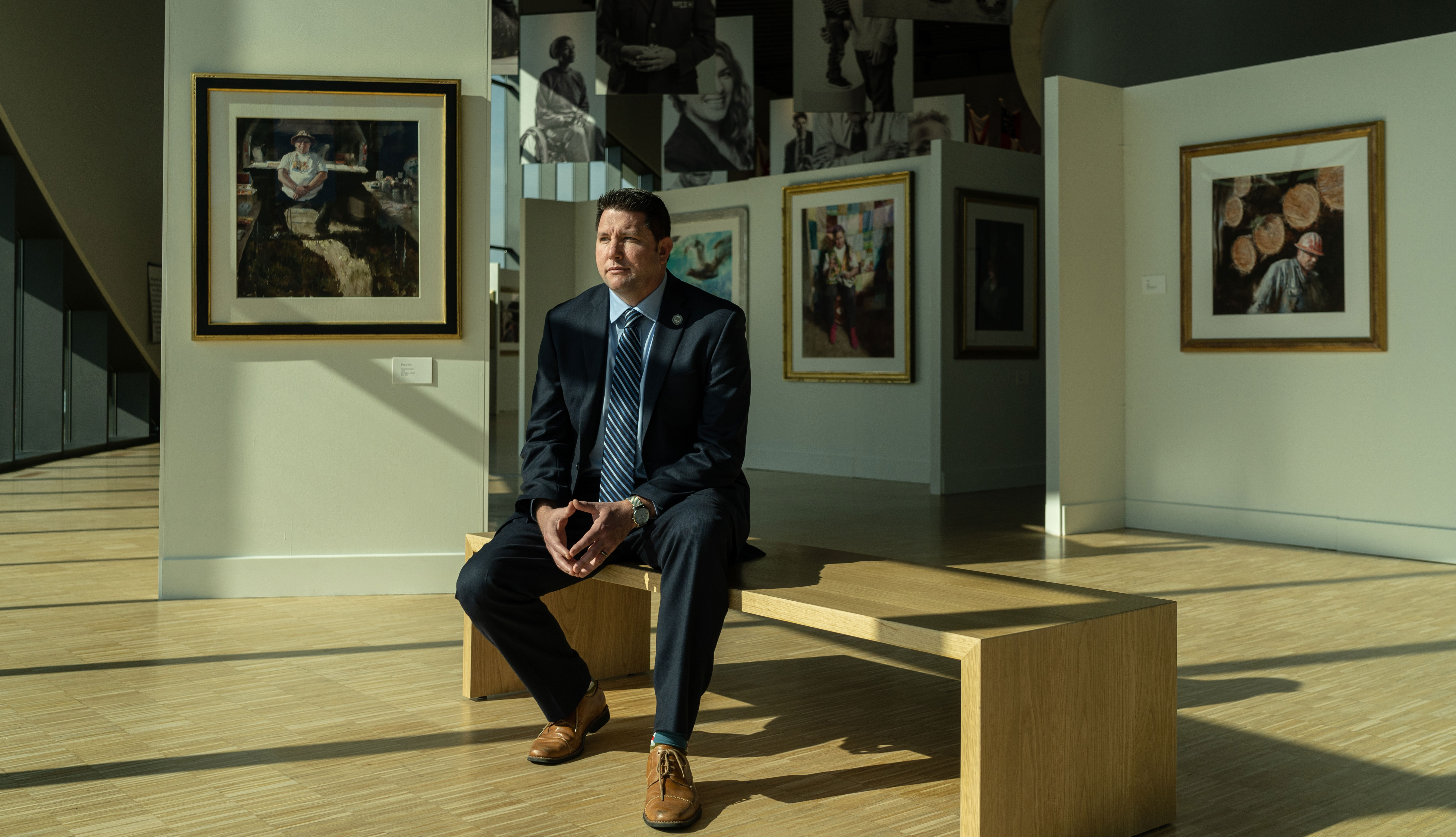AARP Hearing Center

Phil Smith, an AARP Fraud Watch Network volunteer who often hears from veterans during his talks, remembers visiting the National Veterans Memorial and Museum in Columbus when it first opened, in 2018.
“It was spectacular,” said Smith, 70, of Dublin. So he trained to become a volunteer there, too.
AARP Ohio members represent a big part of the museum’s target audience, said Andy Cloyd, its director.
“This group, who happen to now have a national museum in their backyard, define a generation who understand and appreciate the value of service and sacrifice,” Cloyd said.
AARP Ohio is boosting that connection by sponsoring two free virtual events focused on veterans. On Saturday, April 24, a museum tour will be followed by a veteran-focused Fraud Watch discussion, which Smith and other AARP volunteers will lead.
The second event, on Saturday, May 15, will feature a tour of the “We The People: Portraits of Veterans in America” art exhibit, in honor of Armed Forces Day. Watercolorist Mary Whyte spent more than seven years traveling across the country to paint large-scale portraits of one veteran from each state.
Her series chronicles their reintegration into society and the workforce after military service and includes everyone from a zookeeper to a mayor to a man who was homeless.
The events support AARP’s commitment to veterans and the museum’s mission to honor, connect and educate, said Ken Davis, AARP Ohio’s outreach and volunteer engagement manager. More than 750,000 vets live in the Buckeye State.
“Veterans, military and their families are a vital part of our country’s identity and deserve our gratitude,” Davis said.
COVID scams target vets
John Glenn, the late U.S. senator, astronaut, Marine Corps colonel, World War II and Korean War veteran and Ohio native, sparked the idea for the Columbus museum. He envisioned a focus on veterans themselves, not a specific conflict or branch of the military.
The resulting $82 million museum features exhibits that chronicle veteran experiences, from answering the call of duty to life after military service, through personal artifacts, quotes, letters, imagery and films of vets telling their own stories.
Helping vets avoid scams with AARP Fraud Watch events is an “opportunity to protect those who protected us,” Davis said.
Vets get hit with schemes aimed at them—the latest related to the COVID-19 crisis, Smith said. Con artists pretend to be with a federal agency, promising faster access to testing kits, vaccines or stimulus payments if veterans provide personal information and a credit card number.
Some scammers claim to work for the Department of Veterans Affairs, asking for personal information to update records. Others post bogus job offers for vets.
Both museum-related events are free and open to the public. Register for the April 24 tour and Fraud Watch talk at aarp.cvent.com/vettour. It starts at 10 a.m. with a 15-minute tour of a portion of the museum, followed by a Q&A and the fraud presentation.
The 24-minute “We the People” tour will be available on demand online May 15–17 to the first 1,000 registrants. Sign up at aarp.cvent.com/vetart.
For more information, go to aarp.org/oh or call 866-389-5653.
Sarah Hollander is a writer living in Cleveland.
More on Veterans































































